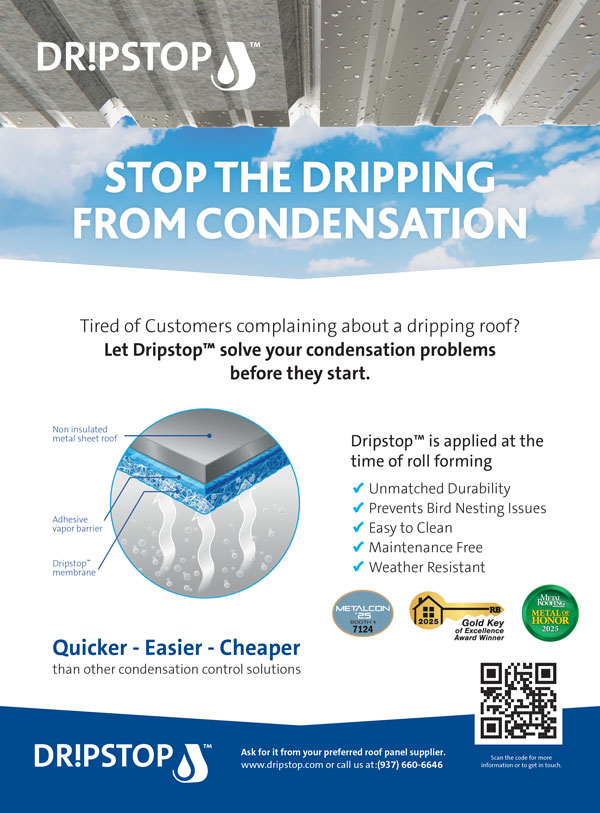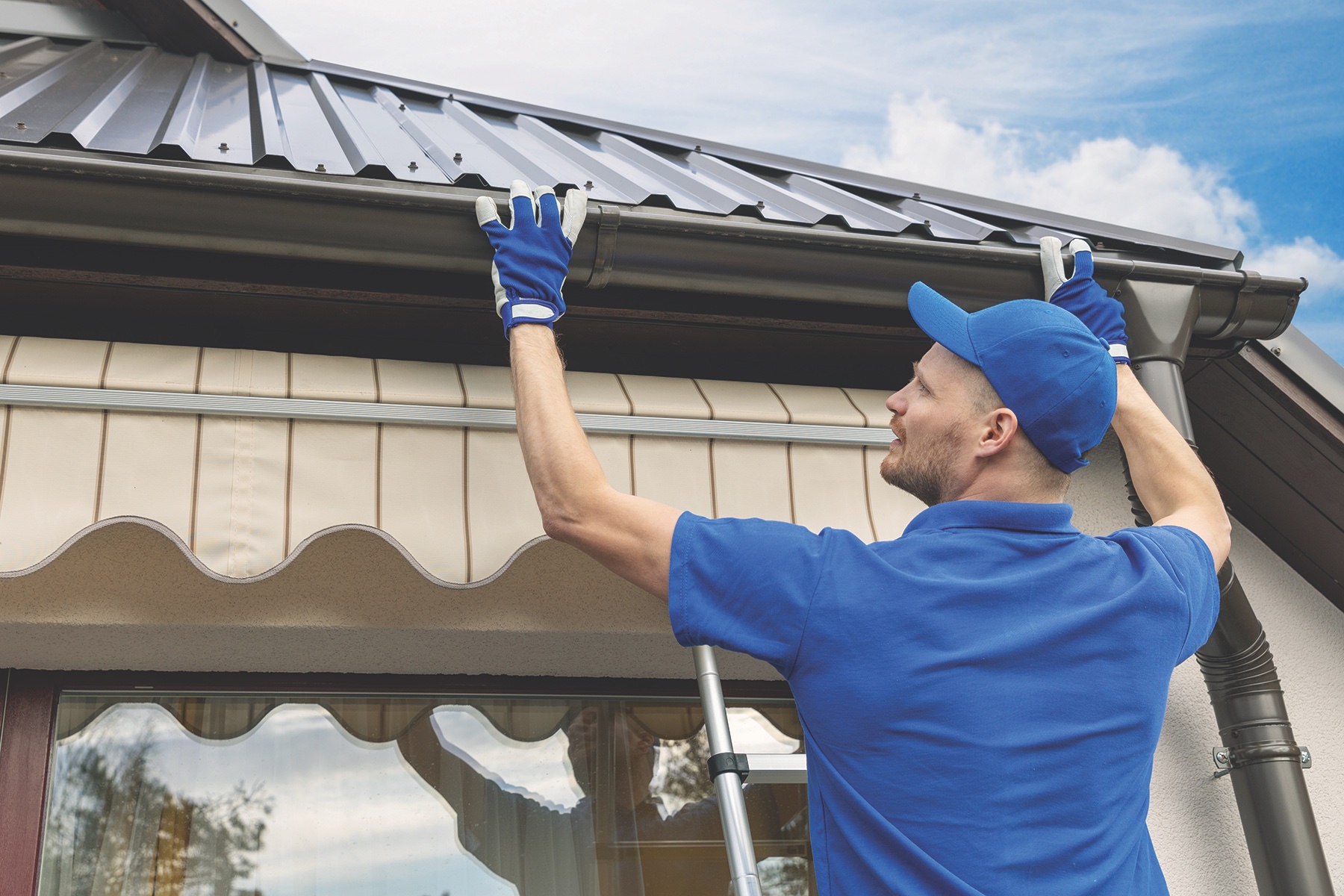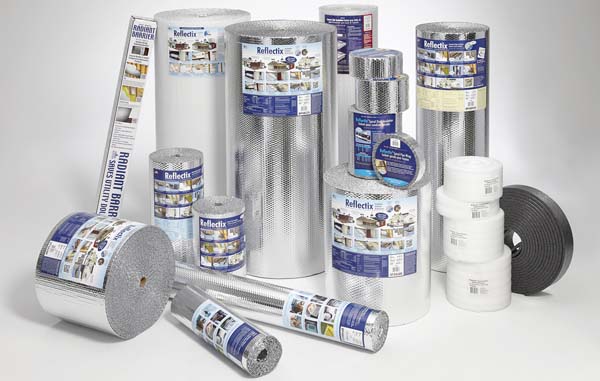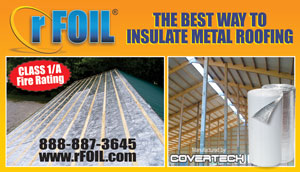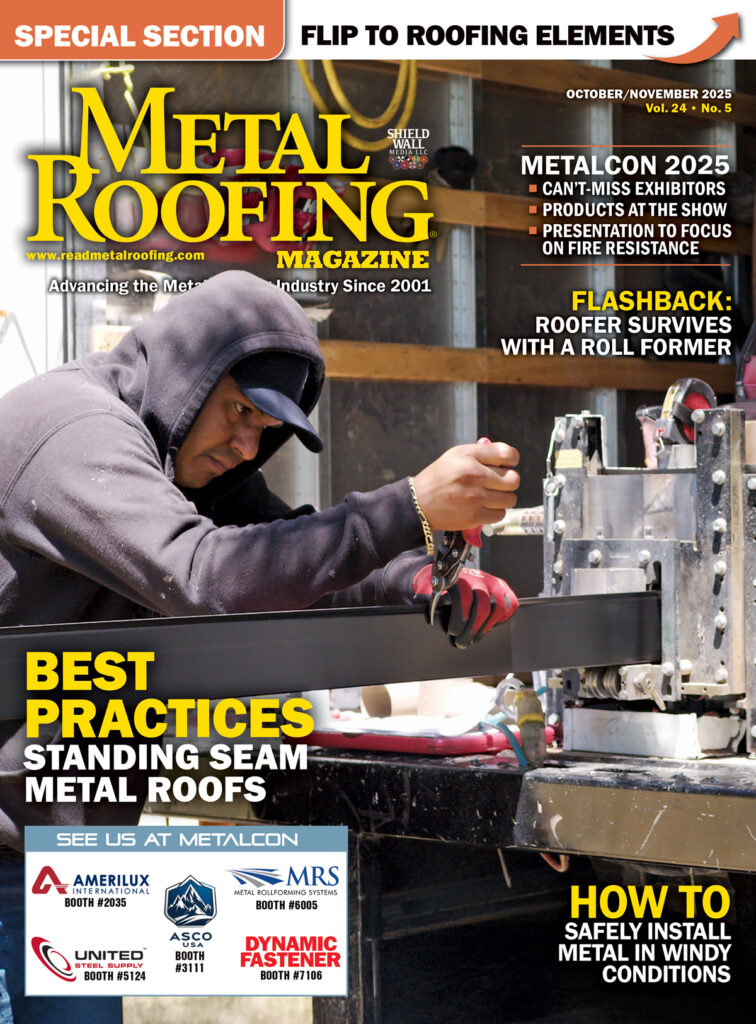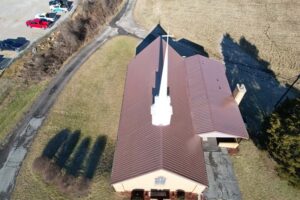By Tim Martin, Levi’s Building Components
If a building is in a region of the country that gets snow, the metal roof is not complete until you have a snow retention system installed.
Snow retention systems are individual snow guards or rail systems that keep the snow from sliding off roofs all at once, which protects the roof and objects below from damage. The systems work by creating friction between the often-smooth and slippery metal roof and the snow that accumulates on it. This article points out some of the basic principles about snow guard or rail placement so the roof and property are protected.
Installing a proper snow retention system is mostly science and partly art. The science part is calculating the potential weight of the snow on the roof and the force pushing on the snow retention. You must have enough snow retention on the roof to handle the weight of the snow for which the building is designed. Snow retention systems are designed to hold the weight of the snow; if the proper amount is not used on the roof, damage can occur to the snow retention or the roof itself. Many companies that manufacture snow retention offer calculators to determine how many snow guards are needed, based on the designed snow load for the region of the country, the slope of the roof, and the size of the roof.
The art of snow retention placement involves location. Just putting some snow retention at the eave is not always enough to protect the roof and what lies below. It is also not wise to place snow retention over doors alone. The rail or snow guards placed just over doors are being asked to carry a much larger load than simply the area covered.
Installation Along Eaves
It’s best to install snow guards or rail between 12” and 18” up from the eave. When installing individual snow guards, they are usually staggered. If you have a straight roof with few or no other roof sections, placement along the eave would be enough. If a second row is called for, the practice is to move just less than half of the way up the roof and install the second row.
Protecting the Valleys
It is also a good idea to install snow retention part of the way up the valleys. This practice keeps the snow from packing down into the valley when it starts to melt. It also helps keep the valley clear so the melt water can easily drain off the roof.
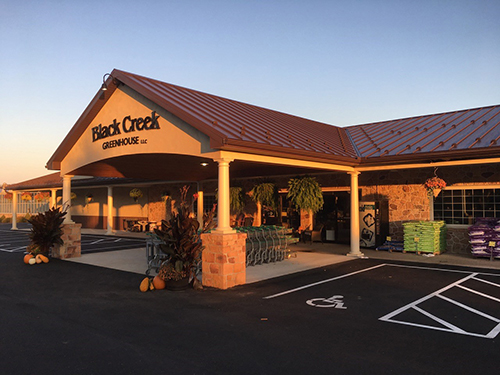
Planning For Roof Areas of Different Heights
If there is a roof section beneath another part of the roof, you need to plan for more snow accumulation in that area. It is best to place an extra row of snow retention in these sections. Snow retention will be supporting more weight in the lower section and without the proper amount of snow guards, it can suffer damage. Illustration 1 shows what can result from not planning for that extra snow build-up on a lower roof section. The installer used snow guards designed for a through-fastened roof on a standing seam roof.
Also, the amount used on the lower roof was correct if there had not been a higher roof section off to the left. The extra snow that drifted down on the lower roof was more weight than the snow guards were designed to handle. A second row of snow guards should have been added in the area just out from the upper roof.
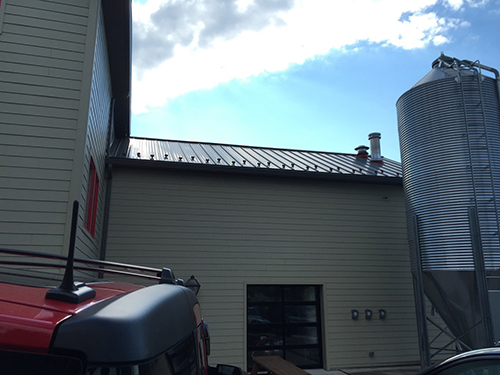
Treat Roof Sections Separately
When a roof transitions into a porch or lean-to, you want to use snow retention on each section. If the retention system is only placed on the lower section, there’s a possibility that snow will pack into the transition or fall from the upper level to the lower section, causing damage to the roof. The photos in this article illustrate good snow retention placement for various roof types. Upper and lower roof sections all have snow retention. Valleys are protected. The installer used a mix of rail on the main roof and individual snow guards on the carport area.
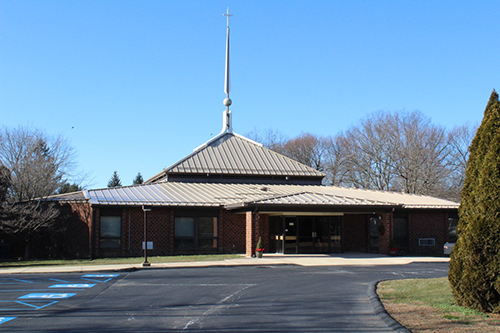
Do’s and Don’ts
Always fasten snow retention mechanically using clamps or screws. Using adhesives alone to fasten snow retention will not last the life of the roof. Adhesives eventually lose their holding strength and the snow retention will come off the roof. Illustration 2 shows where an adhesive system was used and then after they came off the roof a clamp on rail system was used to replace it.
Another essential tip is to use the type of snow retention designed for your roof. With standing seam (hidden fastener) systems, it’s advised to use snow retention that clamp on to the roof. When torquing down the clamp on snow guards, be sure to follow the manufacturer’s guidelines. Leaving the set screwstoo loose will allow the snow guards to move or come off.
Exposed fastener roofs, like Ag Panel or PBR panel, can use snow retention that fasten through the roof. Be sure to run manufacturer-recommended screws into solid wood. Plywood or OSB will not allow for the screws to hold as much. If individual polycarbonate snow guards are used, they should be fastened with screws for long-term use on the roof.
Snow retention is an essential part of a complete metal roof system. It is important to use tested products so calculations can be done to determine how many are needed to safely hold back the snow. It is also best to select a system from a manufacturer that has a proven track record. Additionally, snow retention can be a nice architectural touch on a building. The type of building can determine the style of snow retention you may want to use. A commercial building with a rail system may look better, while a traditional house or barn may look more correct with individual snow guards. MR
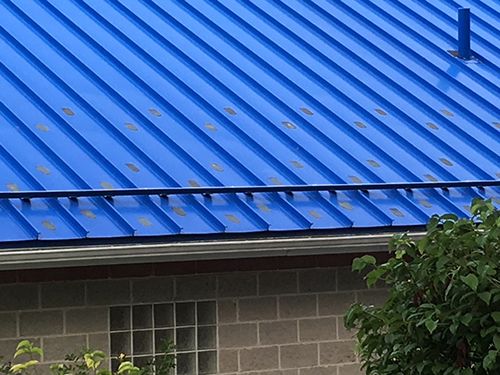
Tim Martin lives in Lancaster County, Pennsylvania, and has been in the metal roofing and snow retention world for the last 15 years. He has seen a lot of what works and what doesn’t in the field. Tim represents several reputable accessories companies in the metal building and metal roofing markets. He covers Pennsylvania, Maryland, Delaware, New Jersey, and Virginia.


